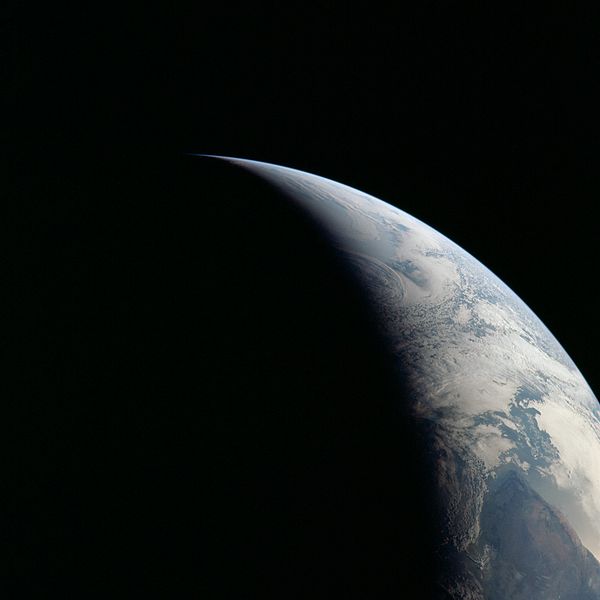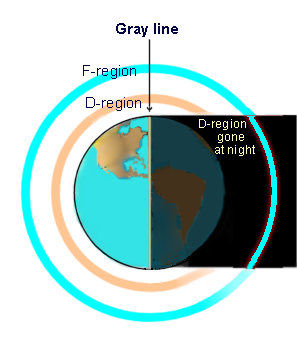
 What is the difference between the Greyline and the Solar Terminator?
What is the difference between the Greyline and the Solar Terminator?

Figure 1: Earth terminator as seen by Apollo 11 Mission
The "terminator" and "greyline" separate the daylight and dark sides of a planetary body, but their definitions differ.
The grayline is the twilight zone, while the terminator is a line tangent to the parent star.
Why is radio propagation better along the greyline?
Propagation is ehanced along the "greyline" because there is no absorbing D-region there.
Read a reasoned explanation.

Figure 2: Ionospheric Regions and Gray Line
The height of the F and D regions ↗
is exaggerated in comparison to Earth dimensions.
The project "Understanding HF Propagation," focuses on skywave propagation,
shows near-real-time indices and explains what the terms mean.
shows near-real-time indices and explains what the terms mean.